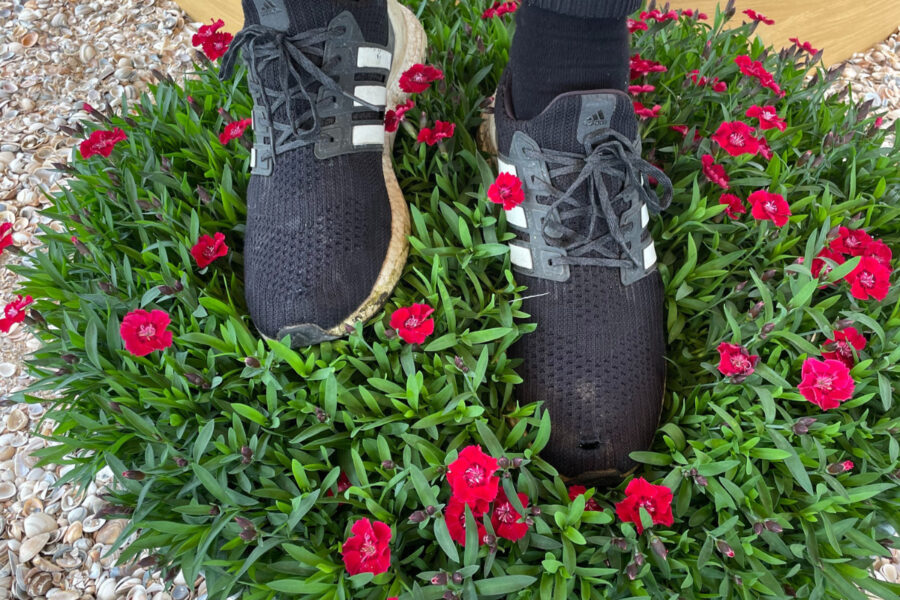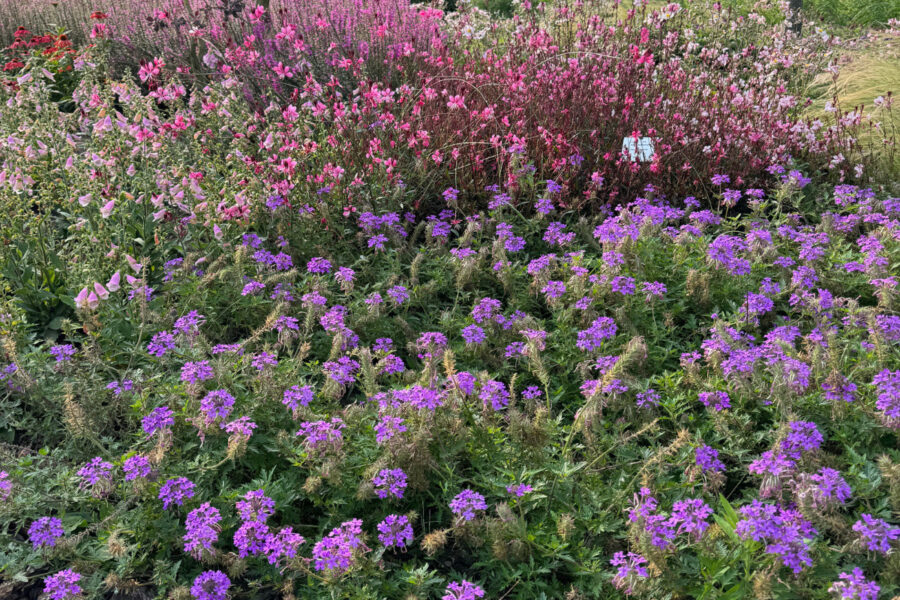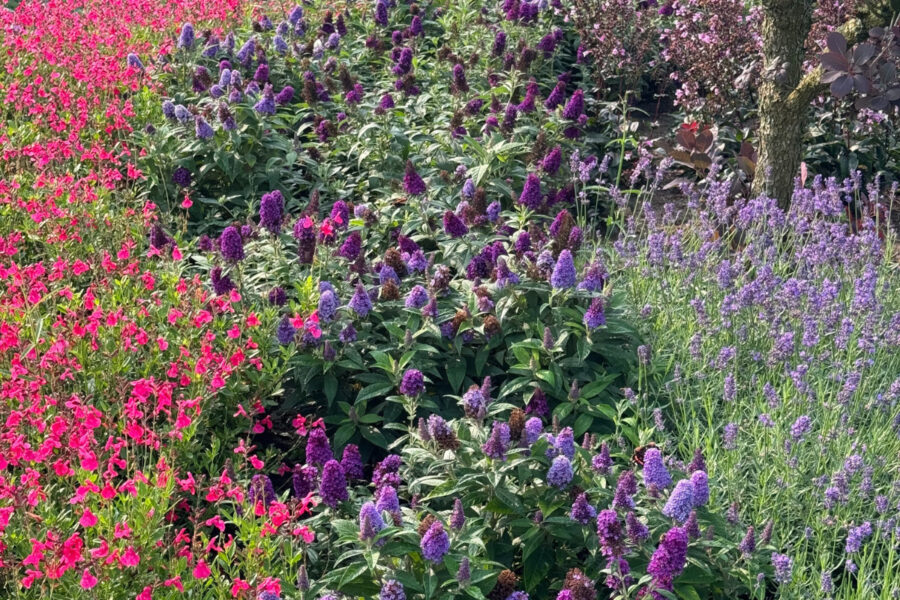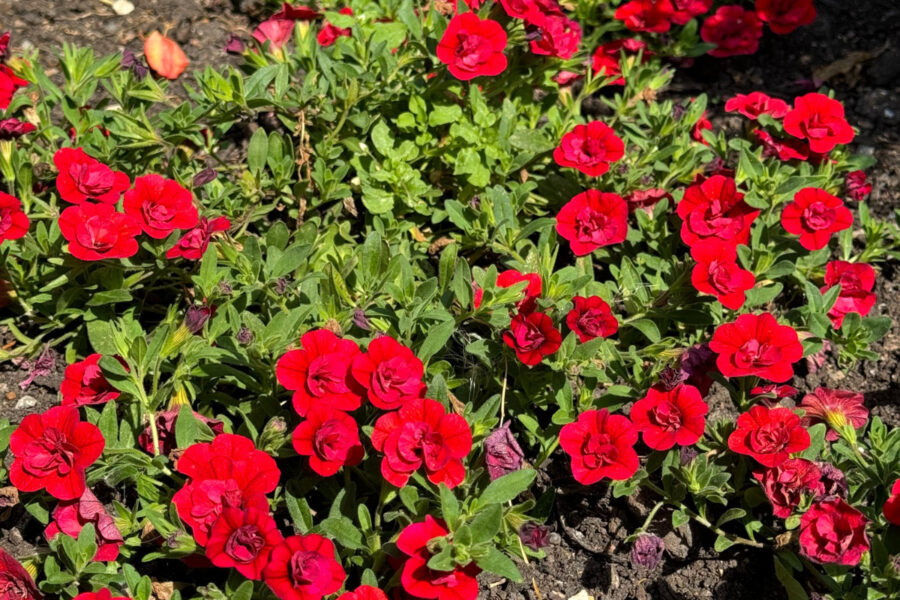Michael does the groundwork to help you fill your gaps in beds and borders
Why put your bare soil on display when you can easily – and beautifully – fill in gaps with planting? These low-growing varieties, wider than they are tall and often overlooked (no pun intended) blanket the soil, keeping it moist and cool. And…..they also help prevent weeds from sneaking through and spoiling your carefully crafted landscape in the process.
Bare soil can be a little ugly and vulnerable to the elements, but with the right low to the ground planting you can level up any bed or border with minimal effort. What’s more, if your chosen addition has good spreading power, you will only need a trolley’s worth to completely transform your garden. Whether you’re looking to fill gaps between plants, cover a rockery, or add a pop of colour to your borders, here are nine distinctive ground cover options that are sure to impress.
Sweet pea ‘Snoopea’
Who says sweet peas are just for climbing? The ‘Snoopea’ variety defies expectations, spreading outwards like a shrub to fill borders with its delicate, fragrant blooms. At about 45cm (18in) tall, it’s perfect for stitching into your garden’s fabric, filling in gaps between taller plants. As an added bonus, the more you cut these flowers for posies, the more they bloom, making ‘Snoopea’ a delightful and practical choice for ground cover next year.
Antirrhinum (trailing snapdragon)
For those with rockeries, the trailing Snapdragon offers a vibrant solution. This ground-hugging plant grows outwards rather than upwards, with a variety of colours available to brighten up rocky terrain. If kept dry during the winter, these Snapdragons can even live on as perennials, making them a durable and eye-catching choice for gaps.
Dianthus

Looking for something dense and durable? The dianthus varieties from Hilverda are tough, low-growing plants that can be used as lawn edging or other areas that get a lot of foot traffic. These carnations flower easily and can be trimmed to reflower within weeks. They’re not necessarily designed to be walked on, but they’re perfect for areas where durability is key.
Groundcover verbena

With its frothy appearance, verbena might look delicate, but some might say it’s quite fern-like in its indestructibility. It’s a hardy plant, resilient to the occasional football landing in the border, and its lovely fragrance only adds to its appeal. Ideal for landscaping, this verbena will survive through the winter, ensuring your garden remains beautiful year-round.
Bedding buddleia

Buddleia isn’t just for attracting butterflies anymore – recent breeding by Florensis has produced a bedding buddleia that’s wide, dense, and perfect for groundcover. This plant is not only visually interesting but also excellent for pollinators, making it a great choice for eco-conscious gardeners.
Hydrangea paniculata ‘Groundbreaker® Blush’

If you’re looking for a plant that spreads out rather than up, the Hydrangea ‘Groundbreaker® Blush’ is a fantastic option. Requiring just five to six plants per square metre, it’s ideal for larger landscapes, where it can create a lush, cohesive look with minimal effort.
Rosa ‘Naturosa®’

The rosa ‘Naturosa®’ is another excellent ground cover choice, particularly for those who love the classic appeal of roses but need something that will knit together and cover ground effectively. With just a few plants, you can fill a space with its beautiful, sprawling growth.
Sunflower ‘Petit Sol’

Sunflowers typically stretch towards the sky, but the ‘Petit Sol’ variety does the opposite, hugging the low level instead. This unique sunflower, which appeared in the RHS Award of Garden Merit (AGM) trial, is perfect for the front of borders or bedding schemes, where it can create a low-maintenance, weed-resistant area that still bursts with colour.
Mini Petunia (Calibrachoa)

Finally, the modern calibrachoa, or mini petunia, makes for a vibrant and versatile ground cover. Once sensitive to soil types, these plants have been bred to thrive in a variety of conditions. They hug the ground and spit out lots of flowers, adding a splash of colour wherever they’re planted.
Find more tips, advice and articles like this at the Amateur Gardening website. Subscribe to Amateur Gardening magazine now





